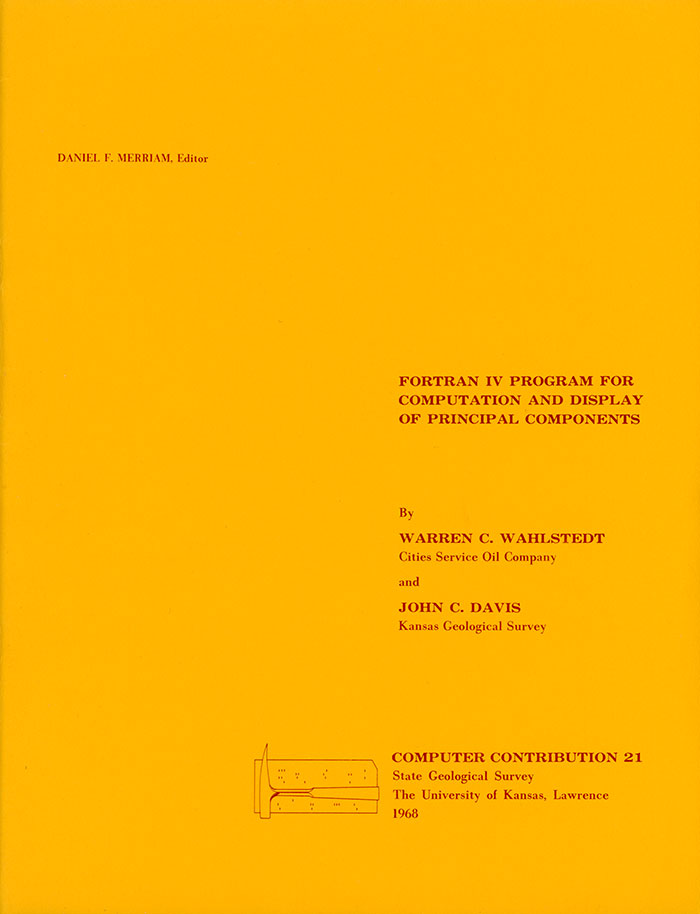
Kansas Geological Survey, Computer Contributions 21, originally published in 1968
1Cities Service Oil Company and 2Kansas Geological Survey

Originally published in 1968 as Kansas Geological Survey Computer Contributions 21.
If several variables are measured on a set of samples, a linear transformation of these variables can be found that will result in new variables which are independent and account for, successively, as much of the total variation as possible. These new variables are called principal components, and the process of computing the transformation is principal components analysis. Many multivariate statistical procedures require data that are independent with respect to each other. This requisite is seldom met in geologic problems, where some degree of interdependency exists between almost all variables observed on a sample. By transforming raw data into principal components, independence is achieved and the new, transformed variates may be tested.
In addition, geologists may profitably use principal components analysis as a "search procedure" to examine a large collection of information in the hope of finding underlying structure or order in the data. Used in this way, principal components is much like factor analysis, and indeed, forms the initial step in many factor analytic procedures. Principal components analysis, however, is much simpler than factor analysis, and is not based on the somewhat elaborate set of assumptions involved in factor analysis. These assumptions have been criticized (Matalas and Reiher, 1967), and principal components analysis may constitute an acceptable substitute for researchers uneasy about the applicability of factor methods.
Use of principal components as a search technique is an expression of two hopes: firstly, that a few principal components will account for a large amount of the total variance in the data and secondly, that the nature of these important components can be deduced from an examination of the linear transformation. In many problems, these hopes will be realized and reasonable interpretations can be made of the components of the observations. However, it may not be possible to reduce the dimensionality of a given problem, or the method may produce components which cannot be meaningfully interpreted.
Principal components analysis consists of a series of operations on a covariance matrix which result in a series of transformed variables each accounting successively for the most possible variance. The same procedure may be applied to a matrix of correlations, resulting in transformed variables based on the maximum amount of intercorrelation. A correlation analysis is equivalent to that obtained by a covariance analysis of standardized variables. In such an analysis, all variables have equal weights and are independent of the magnitude of their measured units.
Read the PDF version (5.1 MB)
Kansas Geological Survey
Placed on web Aug. 23, 2019; originally published 1968.
Comments to webadmin@kgs.ku.edu
The URL for this page is http://www.kgs.ku.edu/Publications/Bulletins/CC/21/index.html